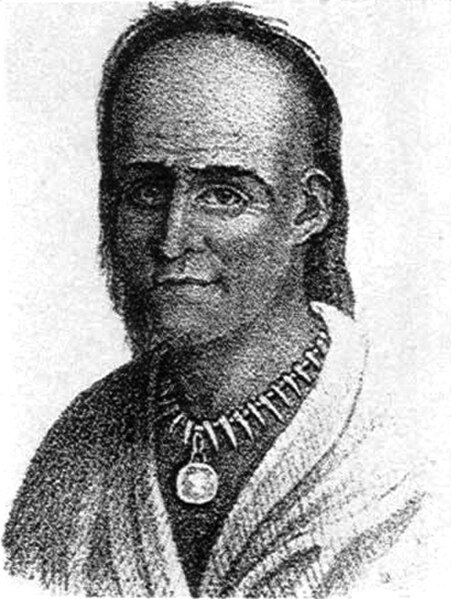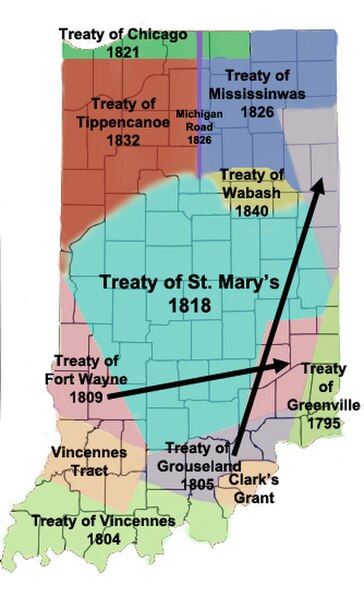The Wea were a Miami-Illinois-speaking Native American tribe originally located in western Indiana. Historically, they were described as either being closely related to the Miami Tribe or a sub-tribe of Miami.
Go-to-ków-páh-ah, He who Stands by Himself, a Wea warrior, oil portrait by George Catlin, 1830, collection of the Smithsonian American Art Museum.
The Miami are a Native American nation originally speaking one of the Algonquian languages. Among the peoples known as the Great Lakes tribes, they occupied territory that is now identified as north-central Indiana, southwest Michigan, and western Ohio. The Miami were historically made up of several prominent subgroups, including the Piankeshaw, Wea, Pepikokia, Kilatika, Mengakonkia, and Atchakangouen. In modern times, Miami is used more specifically to refer to the Atchakangouen. By 1846, most of the Miami had been forcefully displaced to Indian Territory. The Miami Tribe of Oklahoma are the federally recognized tribe of Miami Indians in the United States. The Miami Nation of Indiana, a nonprofit organization of self-identified descendants of Miamis who were exempted from removal, have unsuccessfully sought separate recognition.
Kee-món-saw, Little Chief, Miami chief, painted by George Catlin, 1830
Lithograph of Little Turtle is reputedly based upon a lost portrait by Gilbert Stuart, destroyed when the British burned Washington, D.C. in 1814.
Miami chief Pacanne
Miami treaties in Indiana





